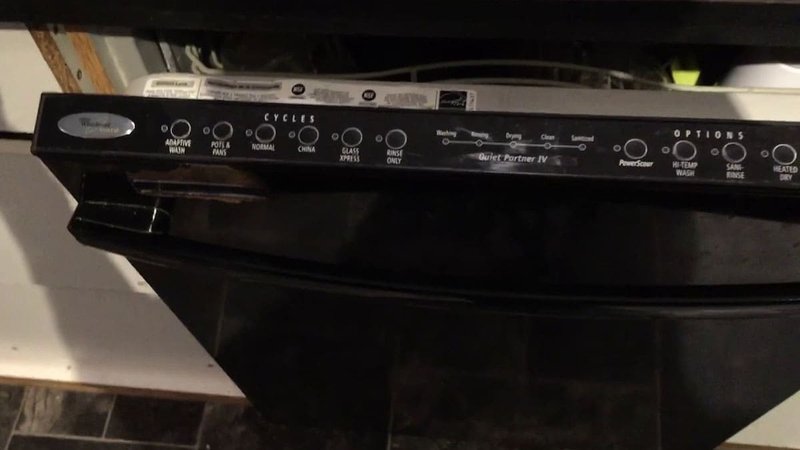
Understanding why this error occurs is the first step toward fixing it. Error Code E1 is commonly related to a water heating issue within the appliance. Think of it as if your shower suddenly decided not to offer hot water one morning. Same appliance dilemma, just a different part of your household. The reasons could range from a faulty heating element to a glitch in the control board. But don’t worry; with the right guidance, you’ll be able to reset your dishwasher and possibly avoid this error in the future.
Diagnosing Error Code E1: What Does It Mean?
Error Code E1, in simple terms, indicates that the water in the dishwasher is not heating properly. Imagine trying to wash your dishes with cold water; it just doesn’t do the trick as well. Your dishwasher feels the same way, needing hot water to cleanse those plates properly. This error often results from problems with the dishwasher’s heating components or thermistor, a device that senses water temperature.
When this error appears, the first potential culprit is often the heating element. Think of the heating element as the water heater for your dishwasher. If damaged or not working efficiently, it won’t heat the water to the required temperature. This malfunction could be due to a simple electrical problem or the component itself wearing out over time.
Another important part to consider is the thermistor. Like a thermostat in your home, it measures the water’s temperature. If the thermistor sends incorrect signals or stops working, the dishwasher might think the water isn’t hot enough, triggering the E1 code. There could also be an issue with the dishwasher’s control board, which oversees all operations. If it misinterprets signals or glitches, it might wrongly assume there’s a heating issue when there isn’t.
Resetting Your KitchenAid Dishwasher
Now, let’s get to the heart of the matter: resetting your dishwasher. Here’s how you can tackle the E1 error with a good old reset. Picture it like rebooting your computer when it’s acting up. A reset can often clear minor glitches and set things back on track. To start, unplug your dishwasher or flip the circuit breaker for a minute. This essentially gives your appliance a chance to refresh its settings.
Once it’s reset, power it back on and run a test cycle. This cycle is like a quick test drive to ensure everything is running smoothly again. With any luck, the reset will clear that pesky error code, allowing your dishwasher to run its normal cycle without interruption.
If the reset doesn’t seem to do the trick, don’t despair! There could be an underlying issue that needs a bit more hands-on attention. At this point, you might want to consult your dishwasher’s manual or reach out to qualified service personnel. They can dive deeper into components and accurately diagnose what’s going on and how it can be fixed.
Prevention and Maintenance Tips
You might be wondering, “What can I do to prevent this from happening again?” Regular maintenance is your best friend here. Just like you wouldn’t skip an oil change for your car, keeping up with dishwasher care prevents most issues before they start. Cleaning the filters and checking for blockages can ensure water flows freely and heating elements don’t overwork themselves.
It’s also a great idea to occasionally inspect your dishwasher’s heating element and thermistor. If you’re unsure what to look for, consider calling in a professional once in a while. They can spot signs of wear and address small issues before they turn into big problems. Lastly, using the right dishwasher detergent can prevent residue build-up, which often leads to mechanical stress.
In summary, resetting your KitchenAid dishwasher when Error Code E1 appears is a straightforward process that can often fix the issue. However, understanding the possible causes and keeping up with regular maintenance goes a long way. You’ll not only solve your current dilemma but also increase the longevity of your trusty dishwasher. Remember, taking small steps now often saves major headaches down the road.